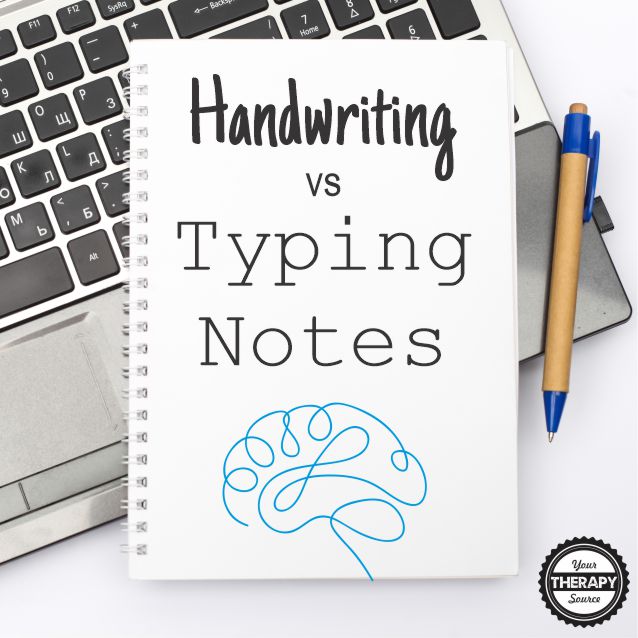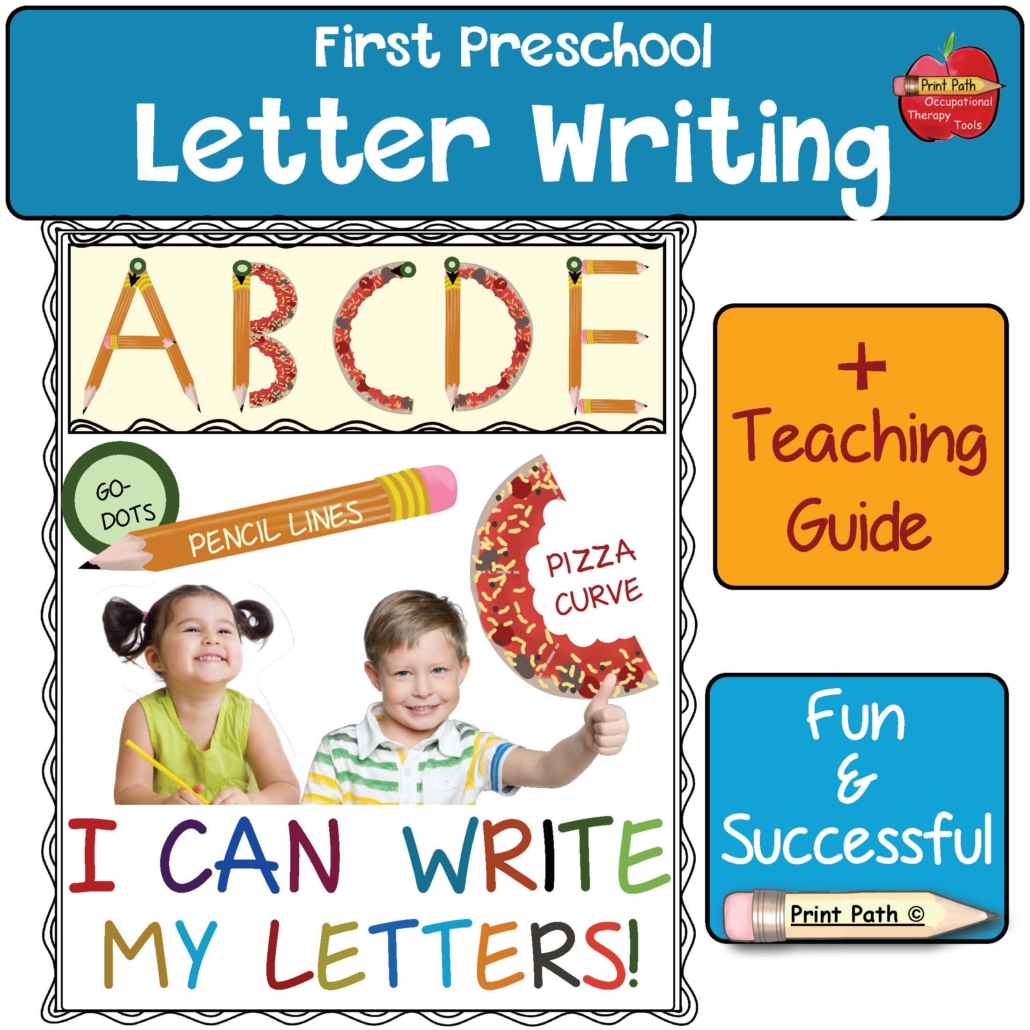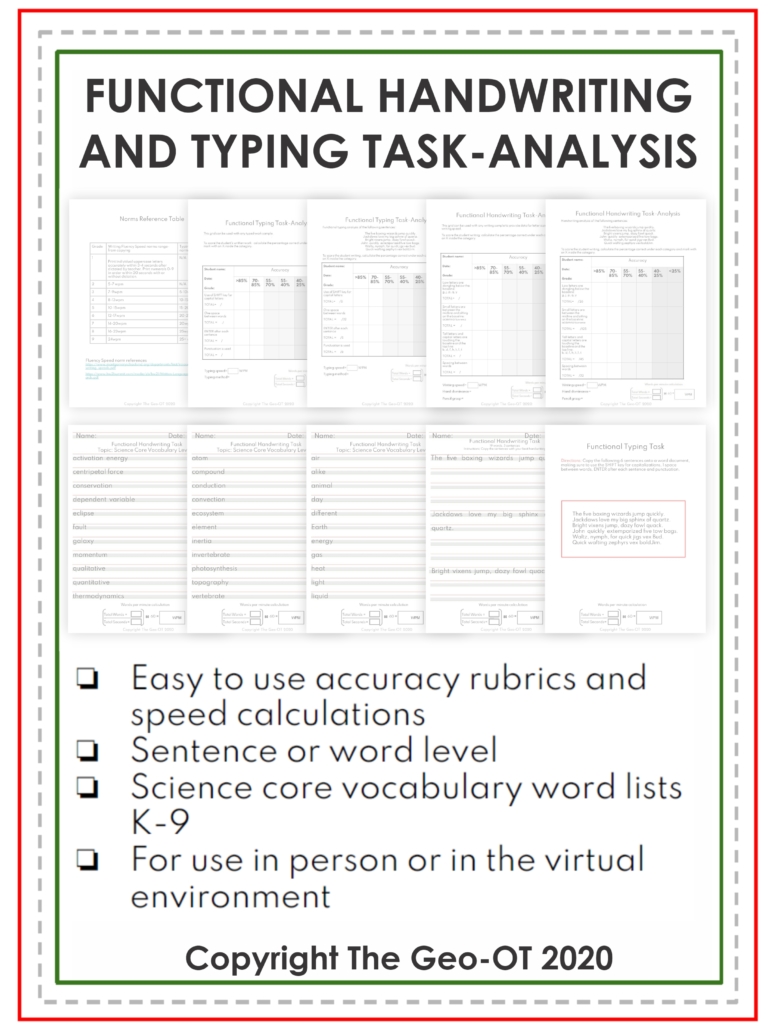Handwriting vs Typing – Who Is the Winner?
Are you aware of the benefits of handwriting vs typing for students? Would you think that handwriting your notes vs typing may help memory, writing, or comprehension? It may even help you get better grades on a quiz!
More and more students are using technology at a younger age. Many think handwriting may become obsolete with 1:1 devices in schools. Researchers have taken a close look comparing writing by hand versus typing. It turns out, handwriting may be more important than you might think.

Handwriting vs Typing in Preschoolers
Letter recognition is an important skills that preschoolers learn. With technology time increasing daily for this age group, handwriting is still a critical skill to teach for younger children. Research indicates that older preschool children, handwriting training resulted in better letter recognition than the typing training (Longcamp et al, 2005).
Effects on Children’s Understanding
Did you know that handwriting notes vs typing can effect children’s recall and understanding? One study looked at the recall and understanding of 26 boys (ages 10-11 years old) taking handwritten notes and compared that to children who typed their notes. The children in the study who handwrote notes had greater conceptual understanding one week after viewing their lesson, compared to those who typed notes although factual recall was not affected (Horbury & Edmonds, 2021).
Writing By Hand vs Typing for Written Expression
When it comes to written expression, one study indicated that the relationship between handwriting and keyboarding indicated that the writing quality of students, whether handwritten or use of a keyboard, were relatively competitive. Overall, keyboarding did allow for faster writing (Feng et al, (2019).
Writers in Grades 4-6 – Handwriting Vs Typing
As children get older in school, keyboarding becomes more a part of their every day routine. Some research indicates that students need continuing handwriting instruction as well as explicit keyboard instruction (touch typing) beyond fourth grade.
They recommend that the continuing handwriting and keyboard instruction is provided once or twice a week with students doing warm-ups such as (a) writing the alphabet from memory, (b) copying interesting target sentences containing all the letters of the alphabet, (c) writing letters that come before and after other named letters, or (d) exchanging papers and circling letters that are illegible and discussing how to make them legible to others for purposes of written communication. These warm up/reviews should be followed by more cognitively engaging writing tasks.
The researchers also recommend that students with specific learning disabilities that impair writing skills (handwriting, spelling, and/or composing) may need need accommodations (e.g., allowing more time to complete written work or using a laptop) and continuing explicit instruction in alphabet letter access, retrieval, and production and copying words in sentence context and using multiple modes of letter production in spelling and composition instruction (Alstad et al, 2015).
Handwriting Vs Typing in College Students
There is more research comparing handwriting vs typing with college students. A meta-analysis compared the educational impact of the method of notetaking in the college classroom – hand written or using electronic device and discovered a decline of 25% of students scoring below the mean when electronic devices when compared to using handwritten notetaking (Allen et al, 2020).
When in came to taking a quiz, the benefits of handwriting vs typing shown through again. Eighty undergraduate students took part in a study comparing taking notes or a quiz by hand or on a laptop. The results indicated that the students who handwrote their notes performed better on the quiz overall, and better on conceptual questions, then students who took notes using a laptop (Crumb et al, 2020).
Read more on How to Take Organized Notes here.
Need Help Deciding What Might Be Best for Your Student When It Comes to Handwriting vs Typing?
The Functional Handwriting and Typing Task Analysis digital document includes easy to use speed calculations and accuracy rubrics for school-based occupational therapy providers and other educators. This resource was created by Anna Long-Slade, OTR. Collect handwriting and/or keyboarding data to determine baseline scores and monitor progress.
Need handwriting resources? Check out these titles:
Handwriting Bundle – HWT Style
Handwriting Interventions Bundle
Need Keyboarding Resources?
Functional Handwriting and Typing Task Analysis
References:
Allen, M., LeFebvre, L., LeFebvre, L., & Bourhis, J. (2020). Is the pencil mightier than the keyboard? A meta-analysis comparing the method of notetaking outcomes. Southern Communication Journal, 85(3), 143-154.
Alstad, Z. et al (2015). Modes of alphabet letter production during middle childhood and adolescence: Inter-relationships with each other and other writing skills. Journal of Writing Research, 6(3),199 -231
Crumb, R. M., Hildebrandt, R., & Sutton, T. M. (2020). The Value of Handwritten Notes: A Failure to Find State-Dependent Effects When Using a Laptop to Take Notes and Complete a Quiz. Teaching of Psychology, 0098628320979895.
Feng, L., Lindner, A., Ji, X. R., & Joshi, R. M. (2019). The roles of handwriting and keyboarding in writing: a meta-analytic review. Reading and Writing, 32(1), 33-63.
Horbury, S. R., & Edmonds, C. J. (2021). Taking Class Notes by Hand Compared to Typing: Effects on Children’s Recall and Understanding. Journal of Research in Childhood Education, 35(1), 55-67.
Longcamp, M., Zerbato-Poudou, M. T., & Velay, J. L. (2005). The influence of writing practice on letter recognition in preschool children: A comparison between handwriting and typing. Acta psychologica, 119(1), 67-79.






